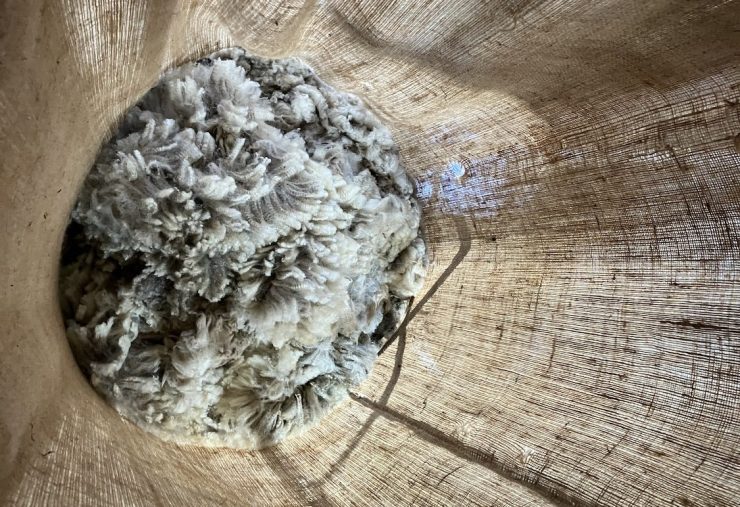
With low wool prices, Midwestern sheep farmers are innovating with the fiber
With low wool prices, Midwestern sheep farmers are innovating with the fiber

At a family farm in central Iowa, a sheep shearer leans over a ram, making smooth, clean strokes through several inches of shaggy wool. For most breeds, this fiber will just keep growing unless it’s sheared off.
By the end of the day here, more than 100 sheep will be about 8 pounds lighter. But farmer Mary Cory said the wool won’t bring in much cash.
“We’ll get just a few cents a pound, really,” Mary Cory said.
Her husband, Tom Cory, started raising sheep in the early 1960s — wool was an asset back then.
“I was able to get enough money from that wool that I could pay for their winter feed. Today, I can’t even pay for half the shearing,” Tom Cory said.

The Corys, like most producers in the Midwest, raise sheep for lamb meat, not so much for wool. In this part of the country, it tends to be coarser, shorter and lower quality than wool from other regions.
Still, selling this fiber to commercial buyers used to offset costs and bring in extra cash. But in recent years, wool prices have dropped. Some producers in the Midwest are fetching less than 5 cents a pound.
That’s why many sheep producers are pivoting. Some are looking for new uses for this fiber. Others are shifting to breeds that don’t produce much wool at all.
Volatile wool prices are one more thing that makes it hard to turn a profit raising sheep these days, said Jaelyn Whaley, a sheep field specialist with South Dakota State University Extension.
“We’re having a hard time keeping people in the industry,” said Whaley.
Whaley said wool prices are connected to global demand. China buys the most American wool, but those imports fell sharply in 2019 because of the trade war with the United States.
“And then with the pandemic, you know, we saw worldwide labor shortages,” Whaley said.
COVID-19 shut down wool processors, disrupted supply chains and increased shipping costs. But here’s the thing: Sheep can’t just stop growing wool. So, there was a global surplus, and that pulled down wool prices even more.

That’s why Whaley said sheep producers have to get innovative “and make those changes that are profitable.”
Changes like finding new uses for wool.
In northern Iowa, Wendy Johnson runs a farm and a business called Counting Sheep Sleep Co. She shows me some of the processed wool from her flock. It’s creamy white and lightly speckled batting.
“This is what fills the pillows. And it’s just such a nice fiber,” Johnson said.
Johnson sends her wool to a mill in Minnesota, where it’s cleaned and turned into filler for pillows, comforters and eye masks that she then sells online.
“It’s an amazing fiber, I think, because it’s so completely renewable, and it just grows back,” Johnson said.
Wool is also biodegradable and can act as a natural fertilizer. That’s what Megan Landes-Murphy does with wool from her ranch and others in south-central Nebraska. She turns coarse wool into garden pellets.
“I think wool pellets are a great outlet for this underutilized wool, and then it’s also beneficial for plant enthusiasts and gardeners alike,” Landes-Murphy said.
The pellets add nitrogen to the soil and slowly absorb and release excess moisture.
Still, some producers are holding out for wool prices to go back up. Back at the farm in central Iowa, sheep shearer Ron Kilstrom takes a break before more ewes and rams are brought into the barn.

“These sheep are shearing really sticky today,” Kilstrom said.
He’s seen some producers move toward specially bred sheep that don’t produce much wool. They’re called hair sheep, and they naturally shed in the spring. No shearing is necessary.
“It disturbs me a little bit. Sheep should have wool on them, period,” said Kilstrom, laughing. Otherwise, they’re like dogs that don’t bark, he said.
There’s a lot happening in the world. Through it all, Marketplace is here for you.
You rely on Marketplace to break down the world’s events and tell you how it affects you in a fact-based, approachable way. We rely on your financial support to keep making that possible.
Your donation today powers the independent journalism that you rely on. For just $5/month, you can help sustain Marketplace so we can keep reporting on the things that matter to you.

















